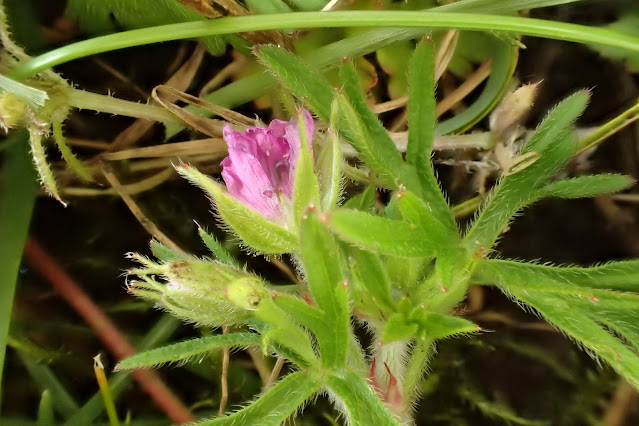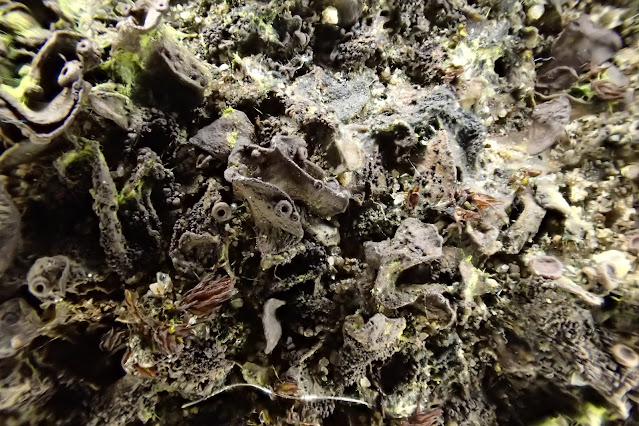Last week I noticed a mini mountain of soil at the back of Fairhurst's cement block yard (former papermill) between Langcliffe and Stainforth, covered in gold. Binoculars hinted at a yellow crucifer.
I asked permission to go into the yard on 31 May and photograph the yellow flowers.
While there I noticed a couple of plants of Alopecurus growing in thin soil on the concrete ground. - This looks like Marsh Foxtail (Alopecurus geniculatus) , - or is it Alopecurus myosuroides? (Black grass). Close examination revealed that the anthers were only 2mm long not 4mm long, and the glumes only 3mm not 4-6. So it is only Marsh Foxtail, not the aggressive weed. back grass. Sigh of relief.
I had found some in St John's Methodist Church Hall Garden/Allotment I think shortly before the Millennium, but then they tarmacked over the garden to become the carpark at the back. (and since then we built the new church on this area). It was a new record for our 10km square then. But then it was tarmacked over.
Actually Black-grass is an expensive weed of arable crops especially winter wheat. It is spreading northwards. It has become resistant to many current weedkillers. I am not sure if I ever sent my Settle record in but I see there have been four recordings of this plant since. As we don't have arable land around Settle, it is unlikely to cause problems here.
 |
| Inflated sheath of Black grass |
On the edge of the cement platform , with a big almost vertical drop to the river below were various plants. I photographed my first Cat's-ear Hypchoeris radicata for the year
 |
| Cat's-ear |
 |
| Cat's-ear leaves- can you see the forked hairs? |
 |
| Cat's ear flower head |
ANd also some common figwort just coming into flower.
 |
| Common Figwort |
I noticed my first Dog Rose coming into flower on the bank way below. (no picture)
Annual Pearlwort was flowering - fruiting rather - I had seen this several years ago on the public road side of the works.
 |
| Centre of Sagina apetala plant |
I photographed the Pyrenean Lily Lilium pyrenaecum
 |
| Pyrenean Lily |
 |
| Pyrenean Lily |
- See more Wildflowers on Exercise Walks around Settle - I made lots of recrods of walks in Covid 2020. Now in 2024 I am trying to record the first time I see something in flower, to get a measure of what time of year plants flower., and am putting records on Facebook.
- I have done this for two months.
- Can I carry on for June - 30Days Wild month?
- Well tomorrow is Sat 1 June: and I have two events booked -
- 1 leading a walk at 9am to Malham Tarn
- 2. Taking part in a survey of waterlife and quality somewhere on the Ribble organised by the Ribble Rivers Trust























































